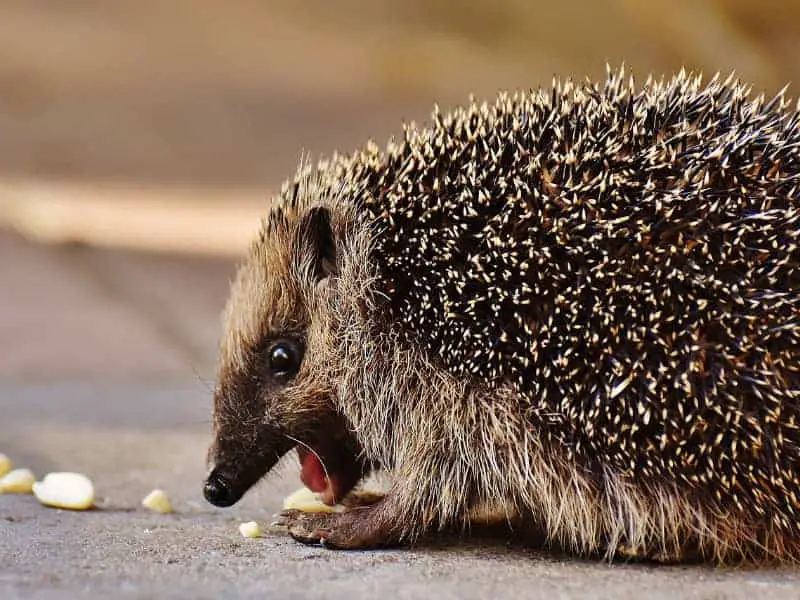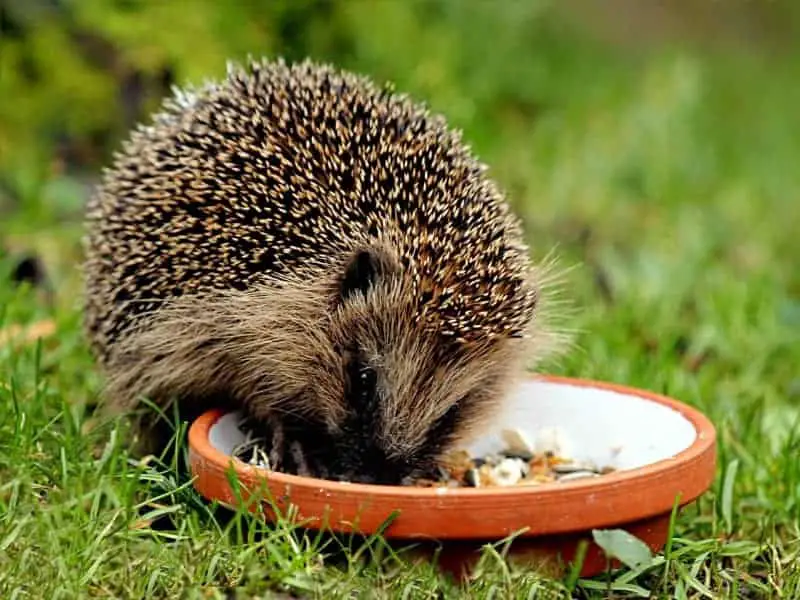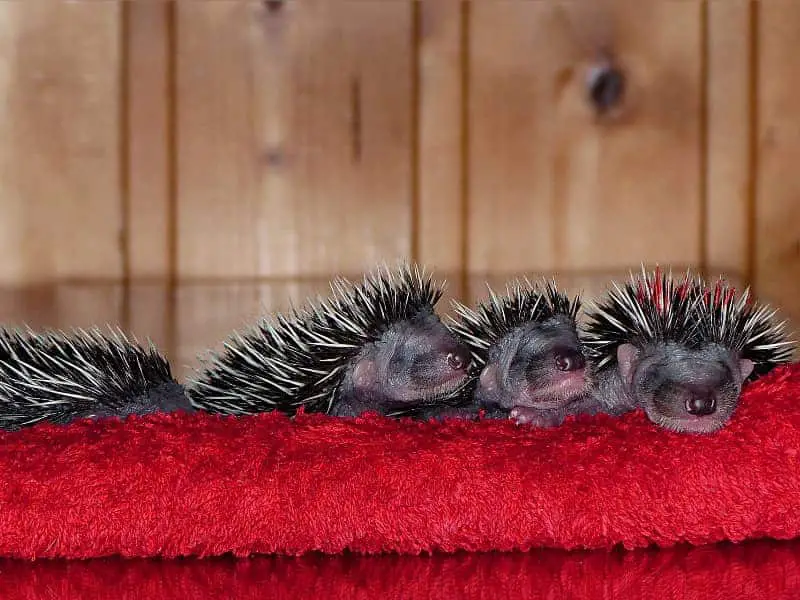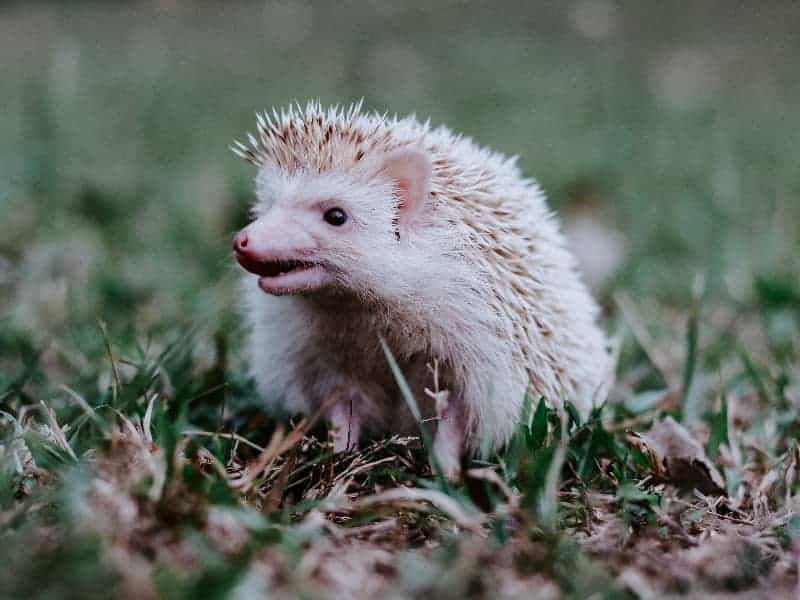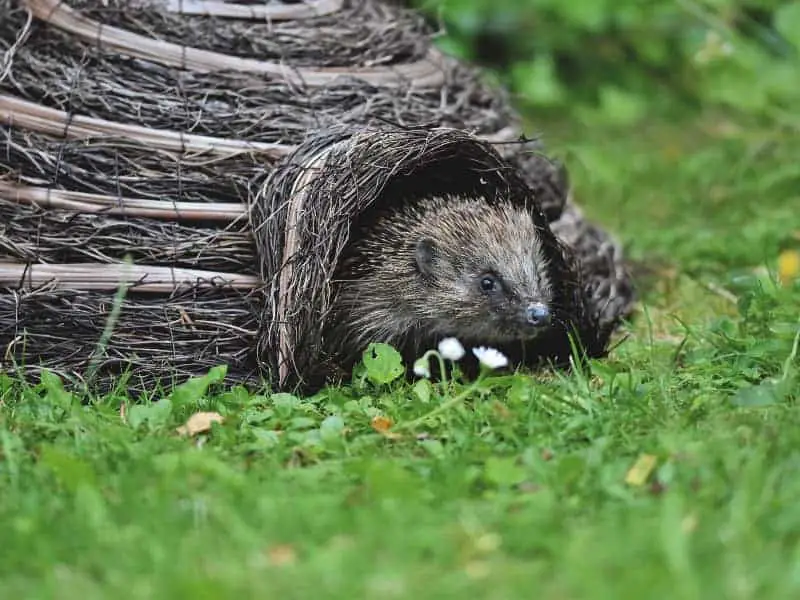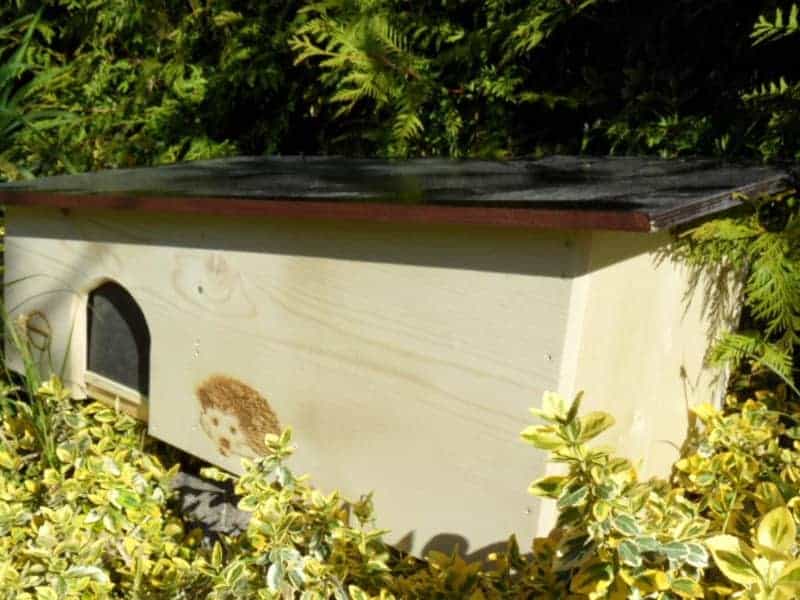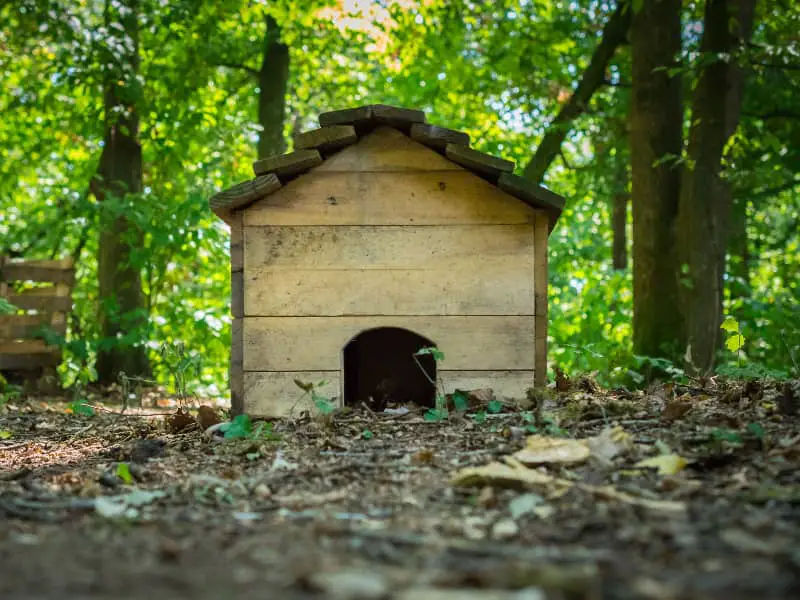
Set up hedgehog house
Putting up a hedgehog house is more than just a nice gesture. It not only provides a safe home for hedgehogs, but also has added value for you and your garden. Let's take a closer look at the individual aspects.
- Set up hedgehog house
- Setting up a hedgehog house - importance for wildlife
- Materials for building a hedgehog house
- Building instructions for a simple hedgehog house
- The right format and the right size
- Set up a winter-proof hedgehog house
- Setting up a hedgehog house - furnishings and equipment
- Feeding the hedgehogs
- Setting up a hedgehog house - care and cleaning
- Frequency of cleaning
- Cleaning agent
- Disinfection
- Frequently asked questions about setting up a hedgehog house
- First steps
- Possible problems when setting up a hedgehog house
- Tips and tricks for setting up a hedgehog house
- Setting up a hedgehog house - observing the hedgehogs
- Behavior
- Activity times
- Protection of privacy
- Conclusion: Setting up a hedgehog house
Setting up a hedgehog house - importance for wildlife
In a world where animal habitats are increasingly shrinking, building a hedgehog house can make an important contribution to preserving biodiversity. Hedgehogs are useful animals that play an important role in the ecosystem. They eat pests such as insects and snails, which benefits the health of your garden. A safe and warm shelter can therefore help hedgehogs survive the winter and reproduce, making a valuable contribution to stabilizing the ecosystem.
Contributions to nature conservation
Building a hedgehog house is a direct form of active nature conservation. You are not just helping a single animal, but supporting a whole network of creatures that exist in your garden. By creating a refuge, you are promoting natural diversity and helping to maintain the ecological balance in your environment. This is not only good for the hedgehogs, but also for other animals and plants that benefit from a richer biodiversity.
Setting up a hedgehog house - advantages for the garden
In addition to the ethical and ecological reasons, there are also practical benefits for your garden. Hedgehogs are natural pest controllers and eat a variety of insects, worms and other small animals that could harm your plants. A hedgehog house can therefore help to make your garden healthier and more lively without you having to resort to chemical pesticides. A hedgehog in the garden is therefore like a little garden helper that gives you a helping hand with maintenance.
Setting up a hedgehog house - the best locations
The placement of a hedgehog house is crucial to its success. It should be suitable for both the hedgehog and you as the garden owner. Let's take a look at some of the criteria that should be considered when choosing a location.
Hidden corners
Hedgehogs like to seek out places that are quiet and away from the main traffic routes. A hidden corner in your garden can be an ideal place for a hedgehog house. The animals feel safer there and are more likely to choose the hedgehog house as their home. A location surrounded by shrubs or low plants can protect the hedgehog from predators such as birds and cats.
Soil condition
Soil quality is an important factor to consider when choosing a location for the hedgehog house. The soil should be well-drained to prevent waterlogging when it rains, which could make the hedgehog house damp and therefore uncomfortable for the animals. A location on a slight hill can be helpful to avoid water accumulating.
Proximity to food sources
Hedgehogs are omnivores, but they have a preference for insects, worms and other small animals. It therefore makes sense to place the hedgehog house near natural food sources. A location near compost heaps, dense bushes or a garden pond can make it easier for hedgehogs to find food and improve their chances of survival.
Materials for building a hedgehog house
Before you start building a hedgehog house, it is important to choose the right materials. These play an essential role in the durability, safety and comfort of the hedgehog house. Let's take a closer look at some common material options and their properties.
Setting up a hedgehog house - types of wood
Wood is the most commonly used material for the construction of hedgehog houses. Not only is it easy to work with, but it also provides a natural environment that is attractive to hedgehogs. Various types of wood such as pine, oak or larch can be used. However, it is important to use untreated wood so as not to expose the hedgehogs to potential toxicity. Also make sure that the wood comes from sustainable forestry to do your bit for the environment.
Insulation materials
A good hedgehog house should not only be robust, but also well insulated, especially if it is to serve as winter quarters. Materials such as straw, hay or leaves are excellent insulators and can be used in the inner lining of the hedgehog house. These materials help to keep the heat inside the house and provide the hedgehog with a cozy home.
Natural materials
In addition to wood and insulation materials, you can also use other natural materials such as stones or clay to make the hedgehog house more stable and closer to nature. These materials are usually readily available and can give the hedgehog house a rustic and natural look that blends in well with the garden.
Building instructions for a simple hedgehog house
Now that we have discussed the important aspects such as location and materials, let's move on to the actual construction of the hedgehog house. A hedgehog house can be a simple but effective project that even beginners in DIY can manage.
Preparation and tools
Before you start, you should have all the necessary materials and tools ready. You will need a wooden board for the floor, four side walls and a roof made of untreated wood. The tools you will need are a hammer, nails or screws, a saw and possibly a drill. A folding rule or tape measure will help you to keep the dimensions correct.
Assembly of the basic structure
Start by cutting the wooden panels for the floor and walls. The dimensions of these should match. The base plate is laid first and the four walls are then attached to it. Make sure you leave a small opening as an entrance for the hedgehog. The walls can be attached with nails or screws, whichever you find easier.
Roof and insulation
Once the basic structure is in place, it's time for the roof. This should be slightly sloped so that rainwater can run off. The inside of the hedgehog house can then be lined with the insulation materials already discussed, such as straw, hay or leaves. These will keep the house warm and provide the hedgehog with a cozy place to sleep.
The right format and the right size
The size and format of the hedgehog house are crucial factors that can make the difference between a cozy home and an unused structure in your garden. To ensure that the hedgehog house is effective and safe, a few basic principles should be observed.
Dimensions
The dimensions of the hedgehog house are important to ensure that the hedgehog has enough space but also feels safe. A house that is too large can make the hedgehog feel insecure, while a house that is too small could be uncomfortable. A good guideline size is approximately 50 x 40 x 30 cm (length x width x height).
Openings
The opening of the hedgehog house is another crucial element that should be carefully considered. The opening should be large enough for the hedgehog to get in and out easily, but not so large that predators such as cats or larger birds can get in. An opening measuring around 12-15 cm wide is usually sufficient.
Interior
There should be no sharp edges or pointed objects inside the hedgehog house that could harm the hedgehog. The interior should also be easy to clean to avoid diseases. Also make sure that there is enough space for insulation material such as straw or hay so that the hedgehog can build a cozy nest.
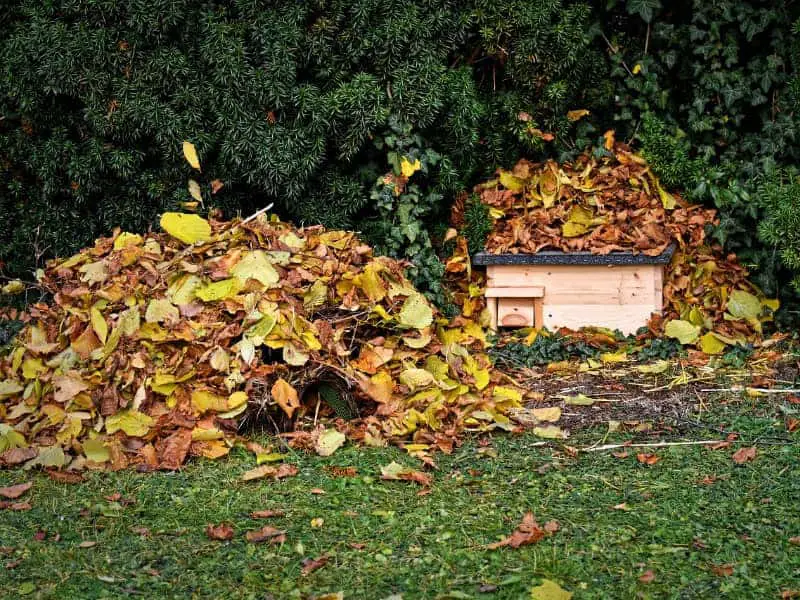
Set up a winter-proof hedgehog house
A hedgehog house should be constructed in such a way that it offers the hedgehog protection and security even during the colder months. This is particularly important as hedgehogs hibernate and need a safe and warm shelter during this time. A winter-proof hedgehog house should therefore meet special requirements.
Thermal insulation
Thermal insulation plays a crucial role in the construction of a winter-proof hedgehog house. As mentioned above, materials such as straw, hay and leaves are ideal for keeping the heat inside the house. Some people go even further and use special insulation materials such as natural sheep's wool to minimize heat loss.
Protection from the weather
A winter-proof hedgehog house should be robust enough to withstand the various weather conditions. The roof should be water-repellent and preferably designed to allow rain and snow to run off easily. Some people even use a thin layer of tar paper or similar material as an additional barrier against moisture.
Winter preparations
Before winter sets in, the hedgehog house should be thoroughly checked and prepared for winter. Remove any potential obstacles or dangerous objects from the interior and fill it with fresh insulation material. Some people also put out special hedgehog food to help the hedgehog prepare for hibernation.
Setting up a hedgehog house - furnishings and equipment
Now that the hedgehog house has been built and winterized, it's time to decorate the interior. Although hedgehogs are not demanding when it comes to furniture or decoration, there are still a few things that should be considered inside the hedgehog house to ensure a safe and comfortable environment.
Floor covering
The flooring in the hedgehog house should be made of natural materials such as wood, earth or sand. Avoid artificial materials such as plastic, as these are unsuitable for hedgehogs. Natural floor materials allow the hedgehog to build a nest and provide good drainage for any water that may seep in.
Furniture and furnishings
When "furnishing" the hedgehog house, it should be kept simple. A flat stone or a small piece of wood can serve as a hiding place or sleeping area. Hedgehogs are loners and do not need any special furniture or toys. The only important thing is that there is enough space inside for them to move around freely and build a nest.
Security features
The safety of the hedgehog should always be paramount. Make sure that there are no sharp objects or small parts inside that the hedgehog could injure itself on. Some people install a small flap at the entrance that can be easily opened from the inside to keep predators out. However, make sure that this flap is not a barrier for the hedgehog.
Feeding the hedgehogs
Feeding hedgehogs properly is an important aspect that should not be neglected, especially if the hedgehog house is also to be used as a feeding station. There are specific things to consider to ensure that hedgehogs receive a balanced and healthy diet.
Suitable food
Not all foods are suitable for hedgehogs. Care should be taken to give them food specially developed for hedgehogs or natural foods such as insects, worms and fruit. Bread and milk are unsuitable for hedgehogs and can lead to health problems. Cat or dog food can serve as an emergency solution, but is not ideal.
Feeding times
Hedgehogs are nocturnal animals and their main feeding times are therefore at dusk and during the night. If you put food out, it is best to do this in the late afternoon or early evening. Try to keep the feeding times constant so that the hedgehogs can adjust.
Drinking water
In addition to solid food, a constant supply of fresh drinking water is also essential. The water should be provided in a shallow bowl that is easily accessible to the hedgehog. Make sure that the water bowl is cleaned regularly to prevent the formation of algae and bacteria.
Setting up a hedgehog house - care and cleaning
A clean hedgehog house is not only important for the well-being of the hedgehog, but also for its health. Regular care and cleaning of the hedgehog house is necessary to prevent diseases and parasite infestation.
Frequency of cleaning
The frequency of cleaning depends on various factors, including the number of hedgehogs visiting the house and the general weather conditions. As a general rule, however, the hedgehog house should be cleaned at least once a month. During the hibernation period, the cleaning frequency can be reduced unless there are signs of illness or soiling.
Cleaning agent
Care should be taken when choosing cleaning agents. Avoid harsh chemicals or detergents that could be harmful to the hedgehog. Instead, natural or mild soaps are a good choice. Some people also use a mixture of water and vinegar to make cleaning effective but gentle.
Disinfection
After cleaning, it is advisable to disinfect the hedgehog house, especially if there are signs of disease or parasites. An animal-friendly disinfectant can be used here. However, disinfection should not be carried out too frequently so as not to disturb the natural microflora of the hedgehog house.
Frequently asked questions about setting up a hedgehog house
Many people who decide to build or purchase a hedgehog house have questions or encounter challenges. In this section, we will answer some of the most frequently asked questions about the hedgehog house.
First steps
The first steps in building a hedgehog house can seem overwhelming at first. It is important to first find the ideal location and decide on a suitable material. Some also choose the route of a prefabricated hedgehog house, which only needs to be erected. The position should be well thought out, as the hedgehog will prefer a quiet, safe place.
Possible problems when setting up a hedgehog house
Even if the idea of a hedgehog house seems simple, problems can arise. These include uninvited guests such as other small animals or the absence of hedgehogs despite an apparently perfect house. Patience is required here. It can take a while for a hedgehog to settle in, and not every animal will feel at home straight away.
Tips and tricks for setting up a hedgehog house
A few tips can increase the success of a hedgehog house. These include, for example, making the house more attractive with natural materials such as leaves or straw. Creating a "hedgehog menu" of suitable food can also attract the animals. In addition, a small "garden" of wild flowers and herbs around the house can not only look attractive, but also provide additional food sources for the hedgehogs.
Setting up a hedgehog house - observing the hedgehogs
Observing hedgehogs can be an exciting and educational experience. However, there are a few things to bear in mind to ensure that you do not harm the hedgehogs or disturb their natural behavior.
Behavior
Hedgehogs have certain behavioral patterns that can provide information about their state of health and well-being. For example, a healthy hedgehog will be active and foraging for food. If you notice that a hedgehog seems lethargic or behaves strangely, this could be a sign of illness.
Activity times
Hedgehogs are mainly active at dusk and during the night. So if you want to make the best observations, these are the times when you should be most alert. A night-time observation scenario can be facilitated by using soft outdoor lighting or an infrared camera.
Protection of privacy
While it can be fascinating to watch hedgehogs, it is important to respect their privacy. Avoid checking the hedgehog house too often or disturbing the hedgehog during important life stages such as mating or hibernation. A minimum distance and respectful interaction are essential to avoid negatively influencing the hedgehog's natural behavior.
Conclusion: Setting up a hedgehog house
Setting up a hedgehog house can be a rewarding and enriching experience. In this concluding section, we summarize the main points and offer some thoughts on the long-term effects of a hedgehog house.
Advantages of a hedgehog house
The advantages of a hedgehog house are manifold: it offers the animals a safe and protected place, supports them in their natural way of life and contributes to biodiversity. For people, it is an opportunity to have a direct impact on nature conservation and at the same time experience the fascinating world of hedgehogs up close.
Long-term effects
A well-designed and well-maintained hedgehog house can have long-term positive effects on the local hedgehog population. It can serve as a refuge in cold winters, increase the animals' chances of survival and help to strengthen the entire ecosystem.
Final thoughts
Building a hedgehog house is more than just a nice gesture; it is an active contribution to the protection and conservation of these charming and useful animals. With the right planning, care and observation, the hedgehog house can become a permanent and enriching addition to your garden.
Author

-
Garden animal - A life with nature
Welcome to my animal blog! My name is Dirk and I am happy to take you on my journey through the fascinating world of animals and gardening.
Born 54 years ago, I have had an insatiable curiosity for the animal world around me since childhood. Although I have moved professionally in other industries, my true passion has always been animals and nature. It is remarkable how a small garden has become such an important part of my life.
Many of my fondest memories are associated with the animals that share our home. Whether it's the curious squirrels that scurry across the trees in the morning, the colorful variety of birds that visit our feeders, or the busy bees and butterflies that pollinate our flowers, every moment with them is invaluable to me.
This blog is my contribution to share my experiences, discoveries and insights with like-minded people. Here I will share stories of unforgettable encounters with animals, give tips on gardening and creating wildlife-friendly habitats, and take you on my journeys through nature.
Thank you so much for being here!
Cordial,
Dirk aka garden animal
Last posts
- 27. February 2024PetsVeganes Hundefutter – Grün und Gesund?
- 18. January 2024ChickensOregano für Hühner
- November 27, 2023HamsterDiurnal hamsters
- November 24, 2023HamsterHamster hammock

